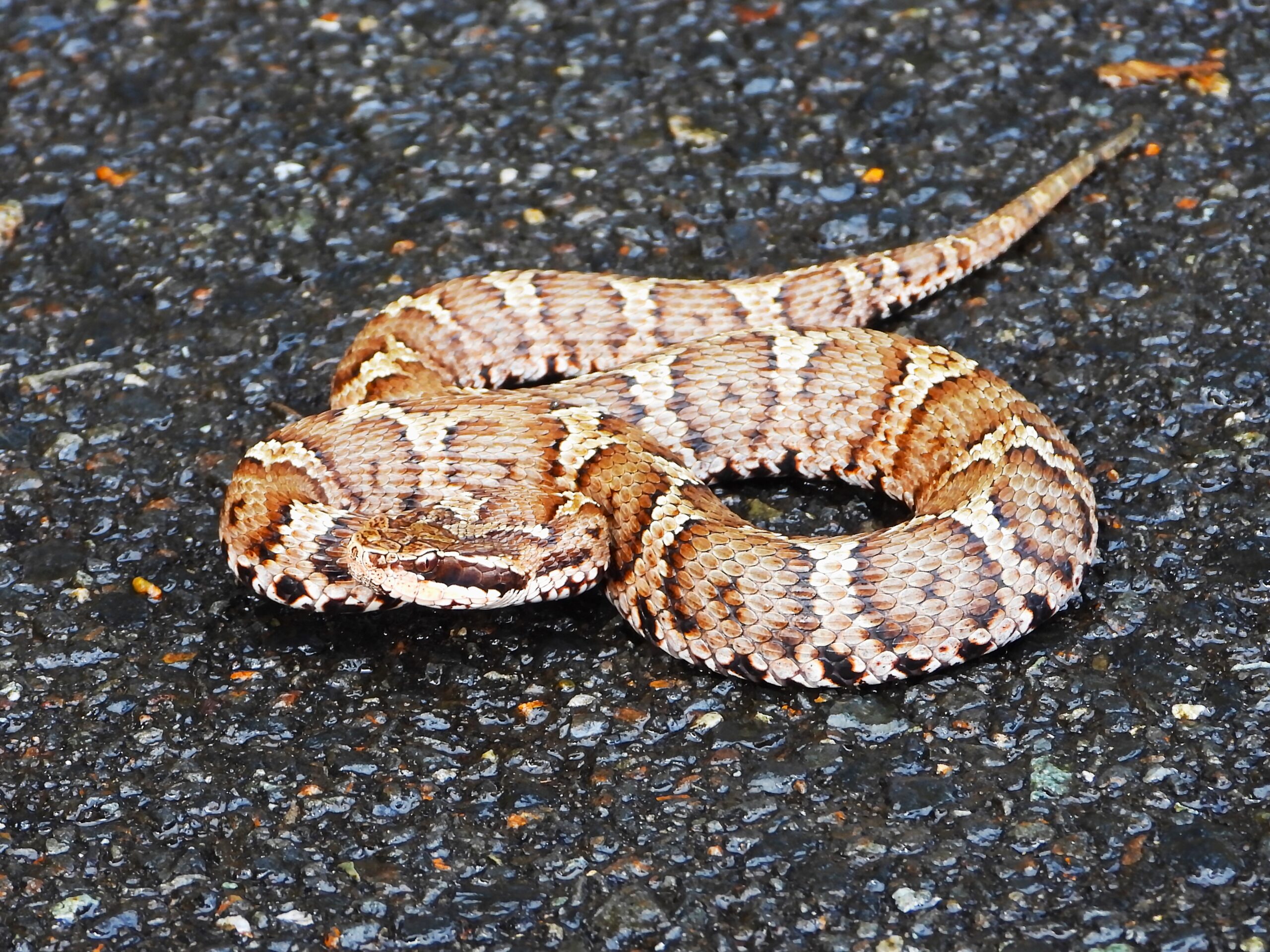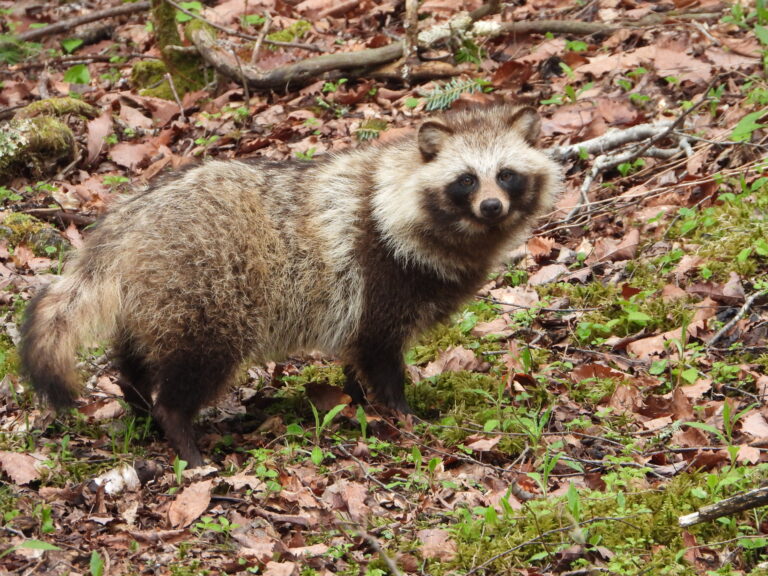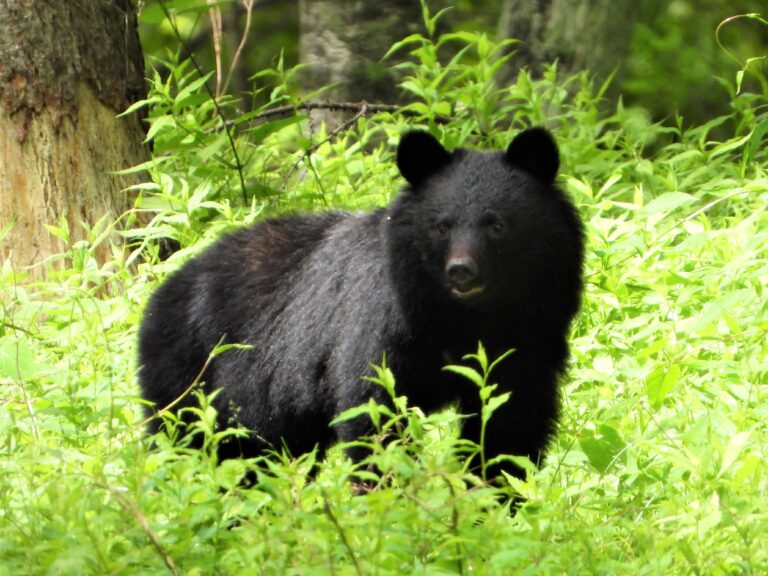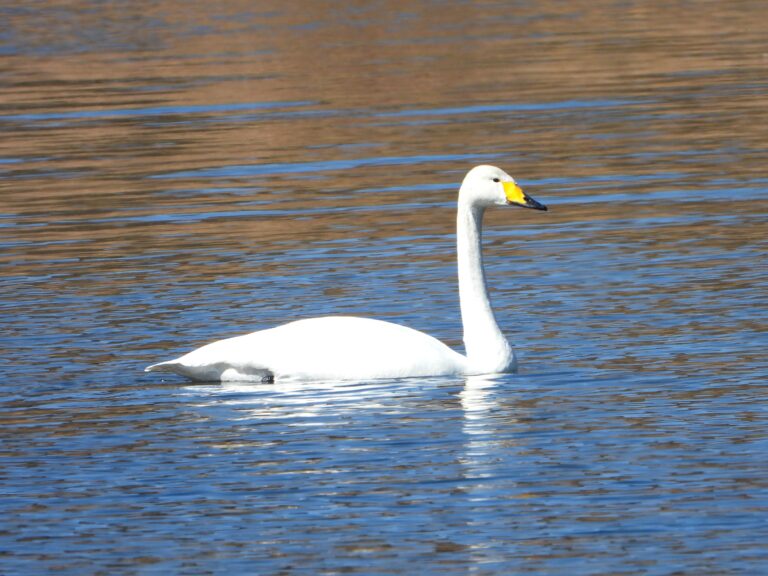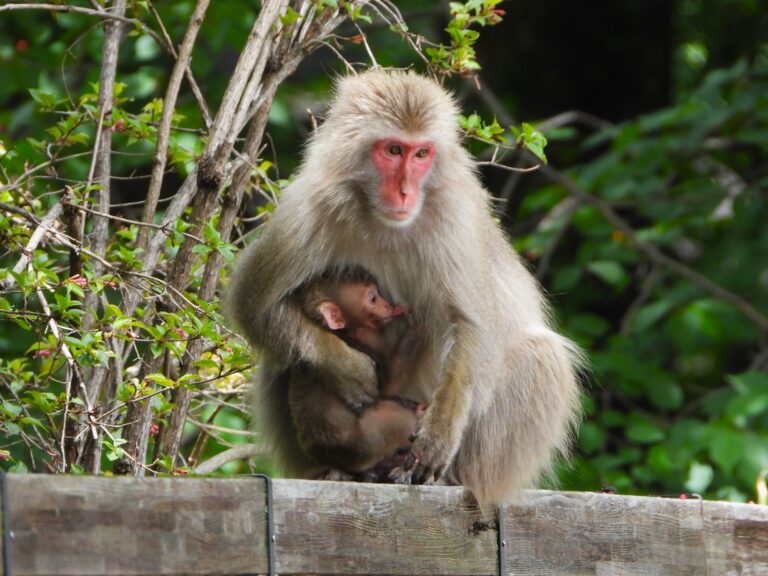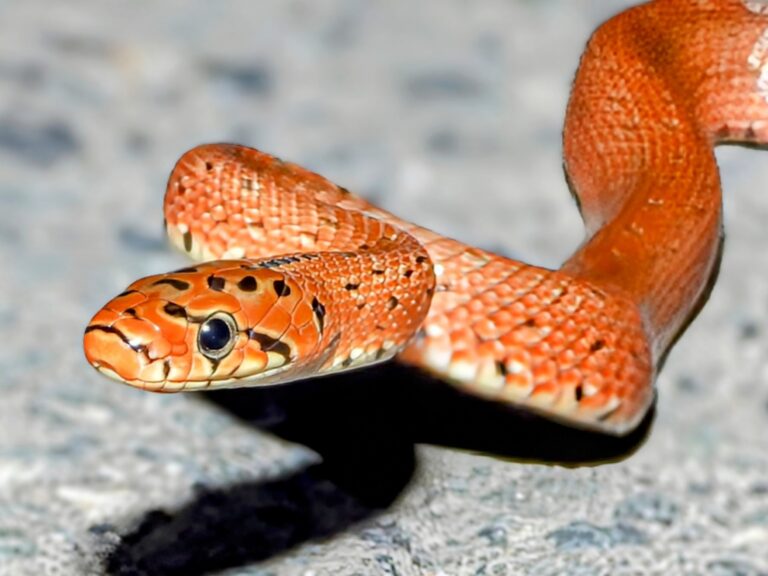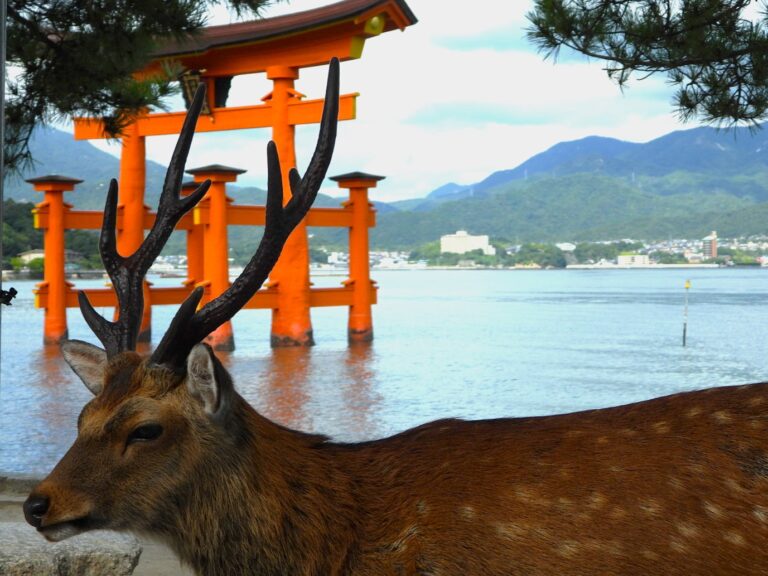Venomous Snakes of Japan – Wildlife of Japan
Introduction
Japan is home to a surprising variety of venomous snakes—from the well-known Mamushi of the mainland to the formidable Habu of Okinawa. Each species differs in size, venom strength, and habitat, yet all play vital roles in maintaining Japan’s ecological balance.
This article introduces five of Japan’s most representative venomous snakes, followed by a list of other venomous and mildly venomous species found across the islands.
Mamushi (Gloydius blomhoffii)
➡️ Read more about this species here.
The Mamushi is the most frequently encountered venomous snake in Japan and accounts for most snakebite cases nationwide. It inhabits grasslands, riverbanks, and rural areas throughout Honshu, Shikoku, and Kyushu.
Although small—typically 45 to 60 cm long—it carries highly hemotoxic venom that causes severe pain, swelling, and tissue damage. Fatalities are rare with prompt medical treatment. The Mamushi hunts small rodents, frogs, and lizards, often lying in ambush beneath vegetation or stones.
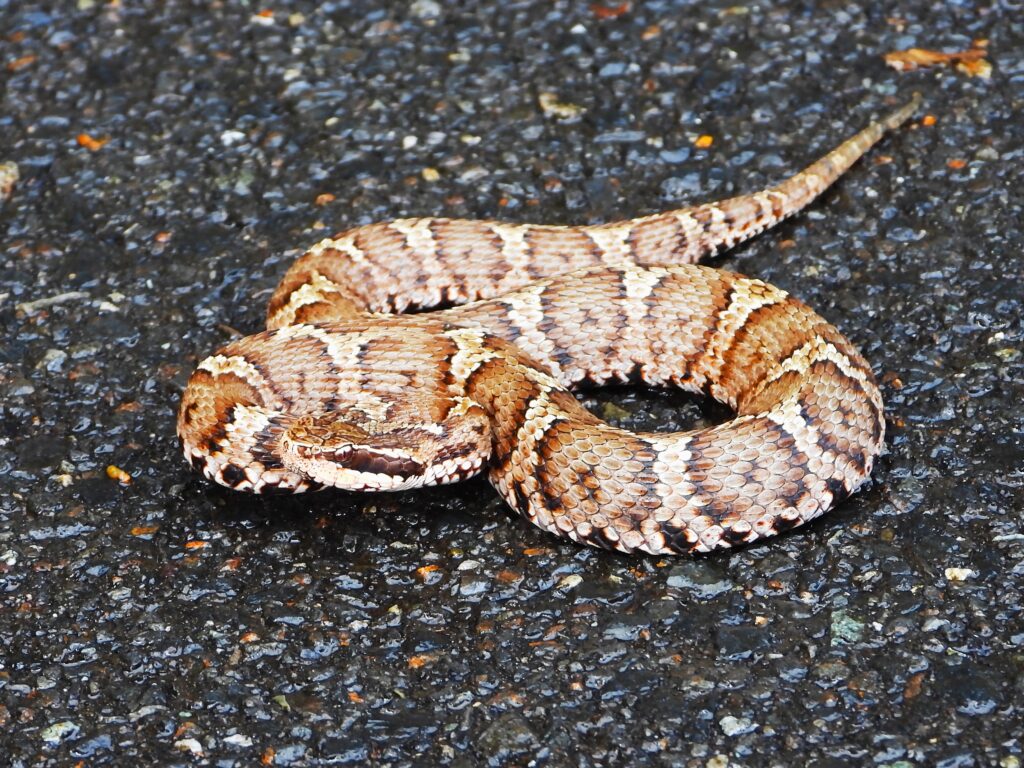
Tiger Keelback (Rhabdophis tigrinus) – Yamakagashi
➡️ Read more about this species here.
The Tiger Keelback is a semi-aquatic snake found near ponds, streams, and rice paddies across much of Japan. Once thought to be harmless, it is now recognized as a rear-fanged venomous species capable of causing internal bleeding.
Remarkably, it can store toxins from poisonous toads it consumes, using these chemicals for its own defense. Despite its potent venom, the Tiger Keelback is shy and rarely poses a threat unless handled.
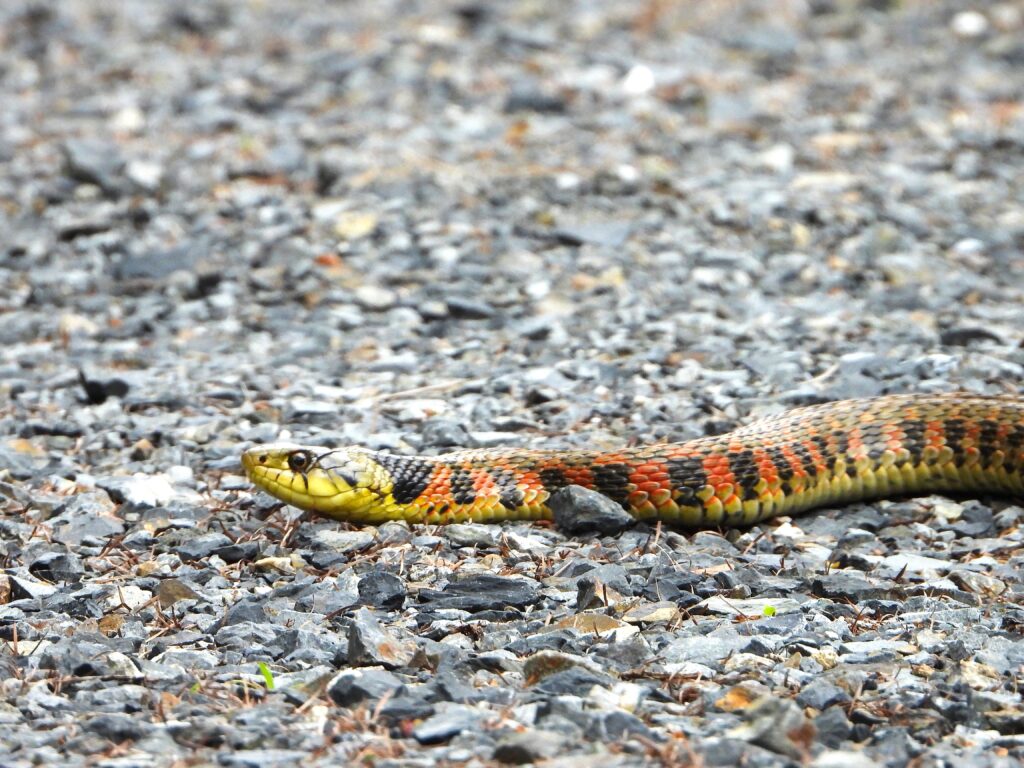
Okinawa Habu (Protobothrops flavoviridis) – Habu
➡️ Read more about this species here.
The Okinawa Habu is a large, aggressive pit viper native to the Amami and Okinawa Islands in southern Japan. Adults often exceed 1.5 meters, and its venom is highly hemotoxic, causing severe swelling, tissue necrosis, and internal bleeding.
Nocturnal and opportunistic, the Habu often appears near villages or roads after dark. Hospitals throughout Okinawa keep specific antivenom in stock. Despite its fearsome reputation, the Habu helps control rodent populations in subtropical forests.
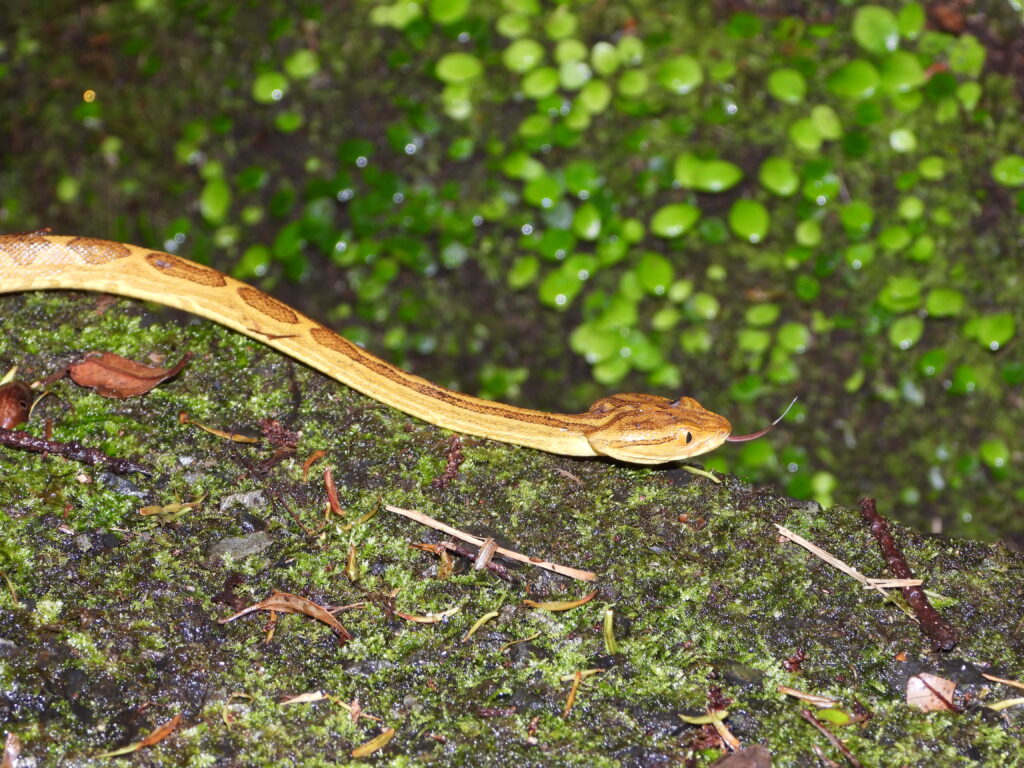
Sakishima Habu (Protobothrops elegans) – Sakishima Habu
➡️ Read more about this species here.
The Sakishima Habu inhabits the lush forests of Ishigaki and Iriomote Islands in the Yaeyama region. Smaller and less aggressive than the Okinawa Habu, it grows to about one meter in length and prefers humid valleys and shaded slopes.
Its venom is moderately strong and rarely fatal, but bites can cause intense pain and swelling. This species symbolizes the wild, untamed nature of the Yaeyama Islands.

Okinawa Pit Viper (Ovophis okinavensis) – Hime Habu
➡️ Read more about this species here.
The Okinawa Pit Viper, or Hime Habu, is a small yet formidable viper found in the forested mountains of the central and northern Ryukyu Islands. It spends the day hidden beneath leaves or rocks and emerges at night to hunt frogs and small mammals.
Though smaller than other vipers, its venom is potent and can cause painful swelling and bleeding. This elusive snake embodies both the quiet beauty and hidden danger of Japan’s southern forests.

Where to See in Japan
Venomous snakes are most often encountered in western Honshu, Kyushu, and the subtropical Ryukyu Islands of southern Japan. The Habu and its relatives live in the forests of Okinawa and Amami, while the Mamushi and Tiger Keelback are widespread across the mainland in rural fields and along rivers.
Venom Types & Effects
Most of Japan’s venomous snakes possess hemotoxic venom, which damages blood vessels and soft tissue. Coral snakes and sea snakes, however, produce neurotoxic venom that targets the nervous system.
Antivenom for the major species—especially the Habu and Mamushi—is widely available at hospitals throughout Kyushu and Okinawa.
First Aid & Safety Tips
If bitten by a venomous snake in Japan, remain calm and keep the affected limb as still as possible. Do not cut the wound, suck out the venom, or apply a tourniquet.
Call emergency services (dial 119 in Japan) and go to the nearest hospital immediately. If possible, note the snake’s color and pattern to help doctors identify the species for proper treatment.
Other Venomous Snakes in Japan
Japan also harbors several rare or mildly venomous species, many of which are restricted to remote islands:
- Tokara Pit Viper (Protobothrops tokarensis) – Tokara Habu
- Tsushima Pit Viper (Gloydius tsushimaensis) – Tsushima Mamushi
- Taiwan Pit Viper (Protobothrops mucrosquamatus) – Taiwan Habu
- Pryer’s Keelback (Hebius pryeri) – Garasu Hibaa
- Yaeyama Keelback (Hebius ishigakiensis) – Yaeyama Hibaa
- Kumejima Coral Snake (Sinomicrurus boettgeri boettgeri) – Kumejima Hai
- Iwasaki’s Japanese Coral Snake (Sinomicrurus iwasakii) – Iwasaki Wamonbenihebi
- Red-headed Wolf Snake (Lycodon semicarinatus) – Hyan
- Japanese Coral Snake (Cyllophis japonicus) – Hai
- Sea Snakes (family Hydrophiinae) – Umihebi
Conservation
Venomous snakes are often feared, yet they play a crucial role in maintaining Japan’s ecological balance by controlling populations of frogs, rodents, and lizards.
Habitat loss, road mortality, and unnecessary killing threaten several island species, such as the Hime Habu and Tokara Pit Viper. Public education and coexistence are essential to their conservation.
Author’s Impression
Venomous snakes are fascinating creatures when observed from a safe distance. Every encounter feels thrilling and deeply rewarding, revealing the hidden drama of Japan’s wild nature.
Never attempt to touch or handle them—keep your distance and appreciate the beauty of these remarkable reptiles.

